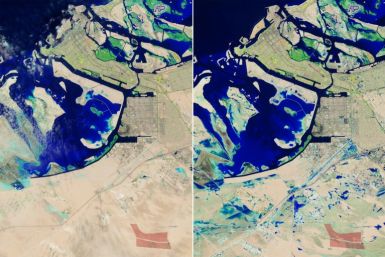World Bank trims growth outlook for East Asia Pacific nations, cites China slowdown as the big factor

A slowing China, weaker commodity prices and tighter external financing conditions are likely to dampen the growth prospects of many East Asia-Pacific economies, the World Bank has warned. The region has long been a bright spot in the world economy.
“Growth in developing East Asia and Pacific is expected to ease," the Washington-based bank wrote in its East Asia and Pacific Economic update report.
Accordingly, it downgraded the growth projections for 2015, 2016 and 2017 for East Asia-Pacific to 6.5, 6.4 and 6.3 percent respectively. That is down from its previous prediction made in April that had 6.7 percent growth for both 2015 and 2016 and 6.6 percent in 2017, CNBC reported.
East Asia and the Pacific grew 6.8 percent in 2014. The region consists of 14 nations and include China, Indonesia, Malaysia, the Philippines, Thailand and Vietnam. In 2015, Southeast Asian economies are expected to grow 4.3 percent, almost stable compared to 2014, before rising to 4.7 percent next year and 4.9 percent in the year after. However, within Southeast Asia, the outlook is mixed.
The large Southeast Asian nations will have the most buoyant economic conditions, as in the Philippines and Vietnam, the World Bank said. The outlook is less optimistic for Indonesia, Malaysia and Thailand.
Mixed outlook
Malaysia and Indonesia will be haunted by weak global commodity prices and with lower prospects for business profits and household incomes. Thailand has to worry about its political uncertainty and its private investment will take a toll. High levels of household debt will also constrain private consumption.
"China's economy will shift to a more balanced and sustainable growth path. In the rest of the region, growth conditions will depend on the exposure of countries to accelerating demand in high-income economies, gradually tightening external financing conditions, and still-subdued international commodity prices," the World Bank said.
But the World Bank allayed fears of a hard landing for China’s slowing economy, reported AFP. The World Bank said it expects hike in the U.S. interest rates to have an orderly impact, though the risk of it causing regional currency turmoil is not ruled out.
Macro management
In the report on 14 economies led by China, the bank urge all to mitigate the impact of the slowing Chinese economy and hike in U.S. rates by adopting “prudent macro-economic management and structural reforms.”
The 14-country forecast covers Indonesia, Malaysia, the Philippines, Thailand, Vietnam, Cambodia, Laos, Myanmar, Mongolia, Fiji, Papua New Guinea, the Solomon Islands and East Timor.
In the updated outlook, the bank also said China’s gross domestic product is expected to grow by 6.9 percent in 2015 before moderating to 6.7 per cent in 2016 and 6.5 percent in 2017. China had a GDP growth of 7.3 percent in 2014.
For feedback/comments, contact the writer at feedback@ibtimes.com.au or let us know what you think below.






